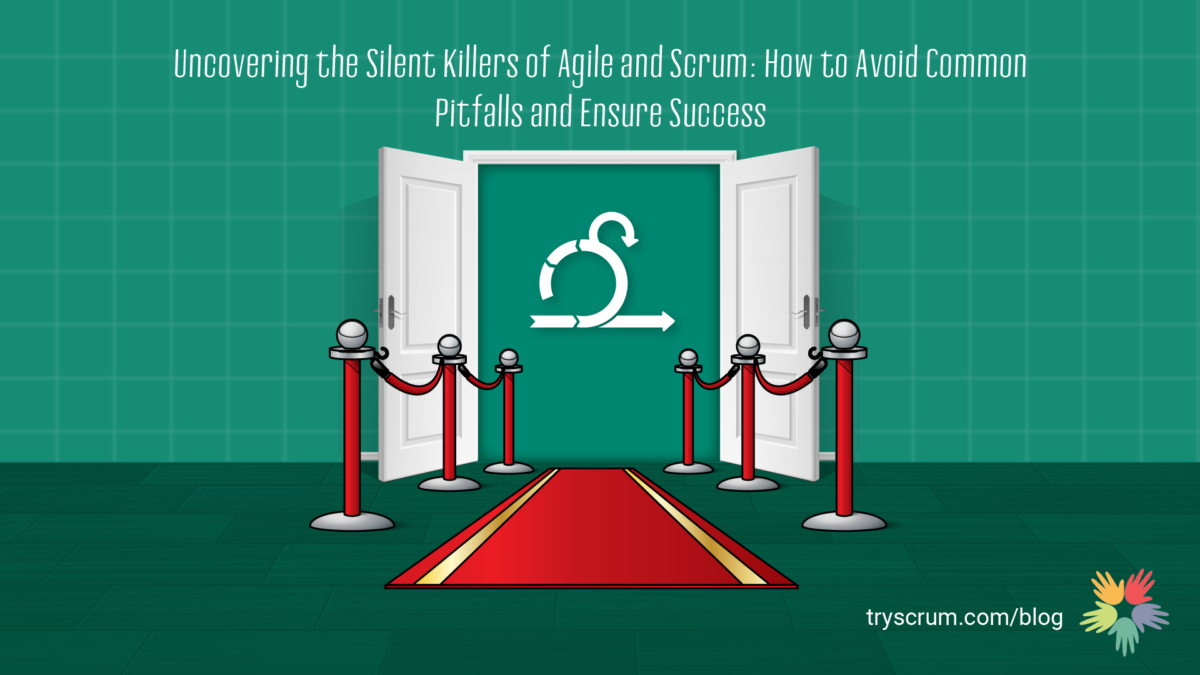In this blog, we will explore the common pitfalls and challenges that teams often face when implementing Agile ways of working, including the Scrum Framework. We’ll explore the “silent killers” that can quietly sabotage your efforts and provide ideas to recover from these traps.
First, we’ll discuss the importance of effective communication and collaboration within your team. Poor communication and lack of transparency can lead to misunderstandings and delays, hindering progress and causing frustration among team members. Then, we’ll provide tips for improving communication and fostering a culture of open dialogue and feedback.
We’ll examine the role of leadership in Agile organisations embracing the Scrum framework. Strong leadership is crucial for guiding the team and keeping them focused and motivated. Conversely, micromanagement and lack of trust can stifle creativity and innovation and lead to burnout and disengagement among team members. We’ll explore how to balance direction and empowerment and create a leadership style that supports Agile and Scrum principles.
We’ll also discuss the importance of continuous improvement and adaptation. Agile and Scrum are based on the principle of constant iteration and evolution, and teams that fail to adapt and improve may find themselves stuck on a track. Finally, we’ll share some of our experiences in setting goals and metrics to identify areas for improvement and make adjustments as needed.
By following the below guidelines, you can avoid common pitfalls and ensure the success of your agile and scrum implementation.
Lack of Clear Goals and Objectives: Clearly define and communicate the goals and objectives to the team.
Lack of Communication and Collaboration: Encourage open and frequent communication between team members to ensure everyone is on the same page.
Inadequate Training and Support: Provide training and support for team members to ensure they have the necessary skills and knowledge to be successful.
Not Regularly Reviewing and Adjusting the Process: Regularly review and adjust the process as needed to ensure it remains effective and efficient.
Not Involving Stakeholders in the Process: Involve stakeholders to ensure their needs and expectations are met.
Lack of Commitment and Buy-in: Ensure all team members are committed to the process and buy into the goals and objectives.
Not Tracking and Measuring Progress: Track and measure progress to ensure the project is on track and identify any issues that need to be addressed.
Conclusion- Finally, we’ll explore the role of tools and tools and Techniques in Agile and Scrum and discuss common pitfalls and best practices related to tools and processes. Some tools like JIRA, Testing Tools, and Automation Frameworks may enhance your team’s productivity and effectiveness. However, teams often fall into the trap of relying too heavily on technology, neglecting the human aspects of Agile working, and including frameworks like Scrum.
Overall, this blog is designed to help teams avoid the “silent killers” of Agile ways of working and help them succeed with these powerful methods. By understanding and addressing common challenges, teams can unlock the full benefits of an Agile environment and drive better outcomes for their organisations.
About Author
Venkatesh Rajamani has more than 17 years of experience delivering working software in short, feedback-driven cycles. He has helped many organisations adopt agile software delivery practices, including large banking, payments, telecom, and product organisations. He started his career as a Software Engineer and spent almost eight years as a hard-core Programmer. He has worked for or with large software delivery organisations, including HP, IBM, Logica, Paypal, Ericsson, RBS and HID. He founded tryScrum.com in 2018 to execute his mission of Humanising Organisations. Venkatesh is fluent in 4 languages. He is based in Chennai, India and sets the overall direction for tryScrum. He is the world’s first to hold PKT, CAL-Educator, PST, CEC & CTC together. He loves reading books, travelling and public speaking.



